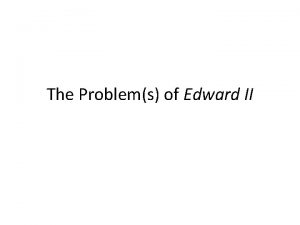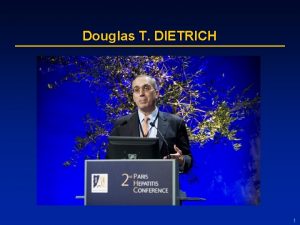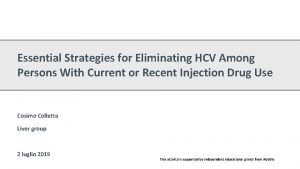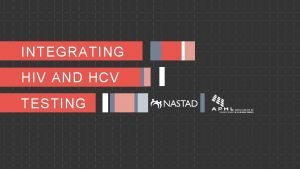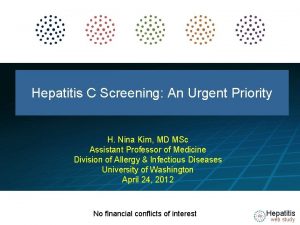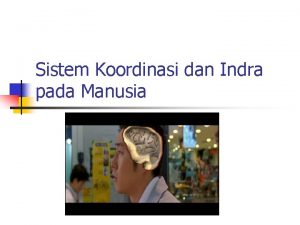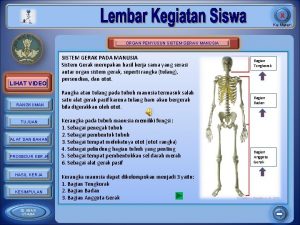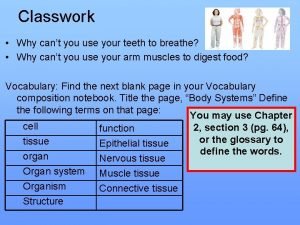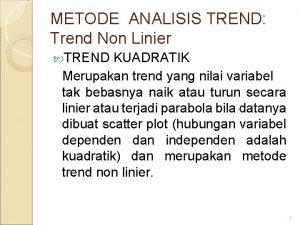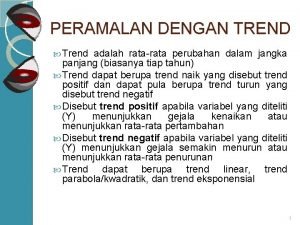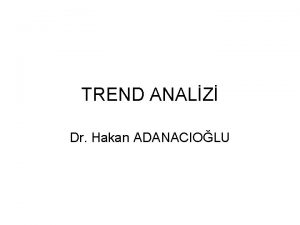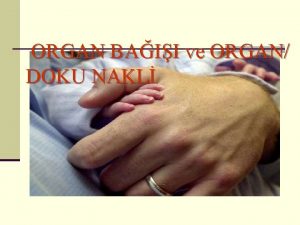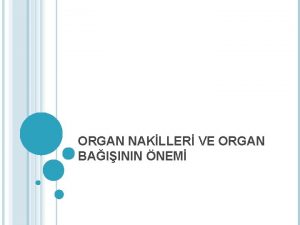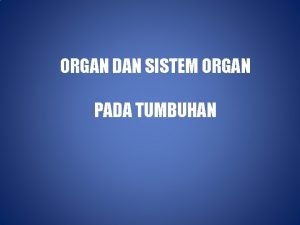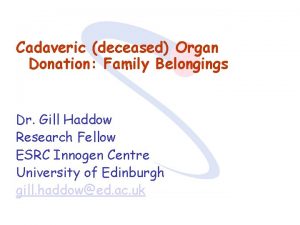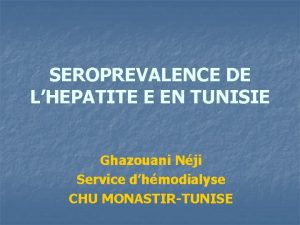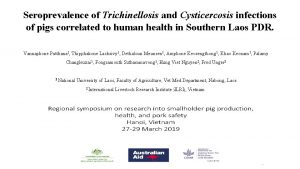Recent FiveYear HCV Seroprevalence Trend Among Deceased Organ


















- Slides: 18

Recent, Five-Year HCV Sero-prevalence Trend Among Deceased Organ Donors in California Marek Nowicki 1, Dem Brucal 1, Claudia Chinchila 1, Steven Takemoto 1, Wayne Babcock 2, Helen Nelson 4, Tom Mone 3, Robert Mendez 1 1 National Institute of Transplantation, 2 California Transplant Donor Network, 3 One. Legacy, 4 Golden State Donor Service

Estimated Incidence of Acute HCV Infection, United States, 1960 -2001 Decline in injection drug users Decline in transfusion recipients Source: Hepatology 2000; 31: 777 -82; Hepatology 1997; 26: 62 S-65 S; CDC, unpublished data

Prevalence of HCV Infection by Age and Gender, United States Males Total Females

The impact of HCV (US) 2000 2010 2020 2030 2040 HCV+ (Millions) 2. 94 2. 87 2. 68 2. 43 2. 18 Cirrhosis (thousands) 472 721 859 880 828 Decomp C (thousands) 65 103 135 146 143 HCC (thousands) 7 11 13 13 12 Deaths (thousands) 13 28 36 40 39 (Davis, LT 2003)

Background • After successful introduction of screening for antibodies to the hepatitis C virus (HCV) in early 90’s, and more recently, also for HCV RNA, several authors reported a dramatic decrease of new acute HCV infections in the US (Hepatology 2000; 31: 777 -82; Hepatology 1997; 26: 62 S-65 S; CDC) • Others published predictions of HCV epidemic trajectories, showing steady decline of the number of infected individuals in the next 30 years (Davis, LT, 2003) • Since ‘ 02 our laboratory has been evaluating HCV serostatus of approx 850 cadaveric organ donors/year. Recently (’ 05) our testing algorithm was supplemented by the sensitive TMA-based NAT assay detecting HCV RNA.

First results

Aim • To evaluate longitudinal trends in HCV prevalence among cadaveric organ donors from southern and northern California.

Specific Questions • Is there a significant change or decrease in HCV sero-prevalence among transplant donors? • What factors are associated with HCV positivity?

Material and Methods • We tested 4, 032 consecutive donors from 3 CA OPOs (2 from N. Cal and 1 from S. Cal) • Testing period: 2002 -2007 – EIA (Ortho), confirmed with RIBA (Chiron) – After 2005 HCV RNA NAT (Procleix, Chiron) • Statistical Methods – Chi-square and logistic regression

%HCV+ Donors in 3 CA OPOs Year P=0. 01 P=NS Increase in OPO 1, trend not significant in OPO 2 & 3

%HCV+ Donors by Donor Age P<0. 001 for both OPOs >80% HCV donors were between age 41 -60

%HCV+ Donors with other Serology P=0. 001 P<0. 001 N=218 N=467 P=0. 048 P=0. 012 N=1169 N=3319

Factors Associated with HCV Factor Reference 2004 -05 2002 -03 2006 -07 Age 41 -60 <40 or >60 Odds Ratio, 95% CI 1. 61, 0. 97 -2. 69 2. 03, 1. 26 -3. 30 1. 77, 1. 20 -2. 61 P 0. 065 0. 004 HBc. Ab+ 9. 06, 6. 17 -13. 3 <0. 001 HBc. Ab- • Prevalence of HCV+ increased • HCV is almost twice as likely in 41 -60 age group • 9 times more likely when HBc. Ab positive

Conclusions • Our data suggest a significant variability from year-to-year of HCV seroprevalance. • There seems to be significant differences of HCV rates among OPOs in California. • Contrary to US-wide trends in HCV’s sero-incident rates, we observed no decrease of HCV sero-prevalence among cadaveric donors in California over past 5 years. • Our results suggest that due to still high numbers of HCV+ cadaveric donors HCV NAT screening is highly desirable to prevent the HCV “window” donations and possible transmissions.

“Take home Message” • HCV+ rates differ among CA OPOs • Rates were highest for age 41 -60 • Rates overall increased in 2006 -2007 – Change in targeted donor population? – More stringent testing (NAT)? – Increased use of non-optimal donors? • Further studies are needed to examine factors associated with outcomes for HCV+ donors

Acknowledgments This presentation will not be possible without: • California Transplant Donor Network • Donors and their families • Golden State Donor Service • National Institute of Transplantation • One. Legacy


Prevalence of antibody to hepatitis C virus among populations of US military Personnel (Hyamas et al, A. J. f Epidemiology, 2001)
 Individual deceased personnel file
Individual deceased personnel file My father is deceased come gaveston
My father is deceased come gaveston Hcv symptoms female
Hcv symptoms female Otto hoffman by product oven diagram
Otto hoffman by product oven diagram Douglas t dietrich
Douglas t dietrich Hcv treatment
Hcv treatment Hiv test window period
Hiv test window period Hcv treatment
Hcv treatment Cell to tissue to organ to organ system to organism
Cell to tissue to organ to organ system to organism Sistem koordinasi
Sistem koordinasi Organ penyusun sistem gerak pada hewan
Organ penyusun sistem gerak pada hewan Organ and organ system
Organ and organ system Cell tissue organ organ system organism
Cell tissue organ organ system organism Foto rontgen efusi pleura
Foto rontgen efusi pleura Kuadratis adalah
Kuadratis adalah Metode trend eksponensial adalah
Metode trend eksponensial adalah Recent advances in ceramics
Recent advances in ceramics Can backdated udin be generated
Can backdated udin be generated Importance of scanning and skimming
Importance of scanning and skimming

